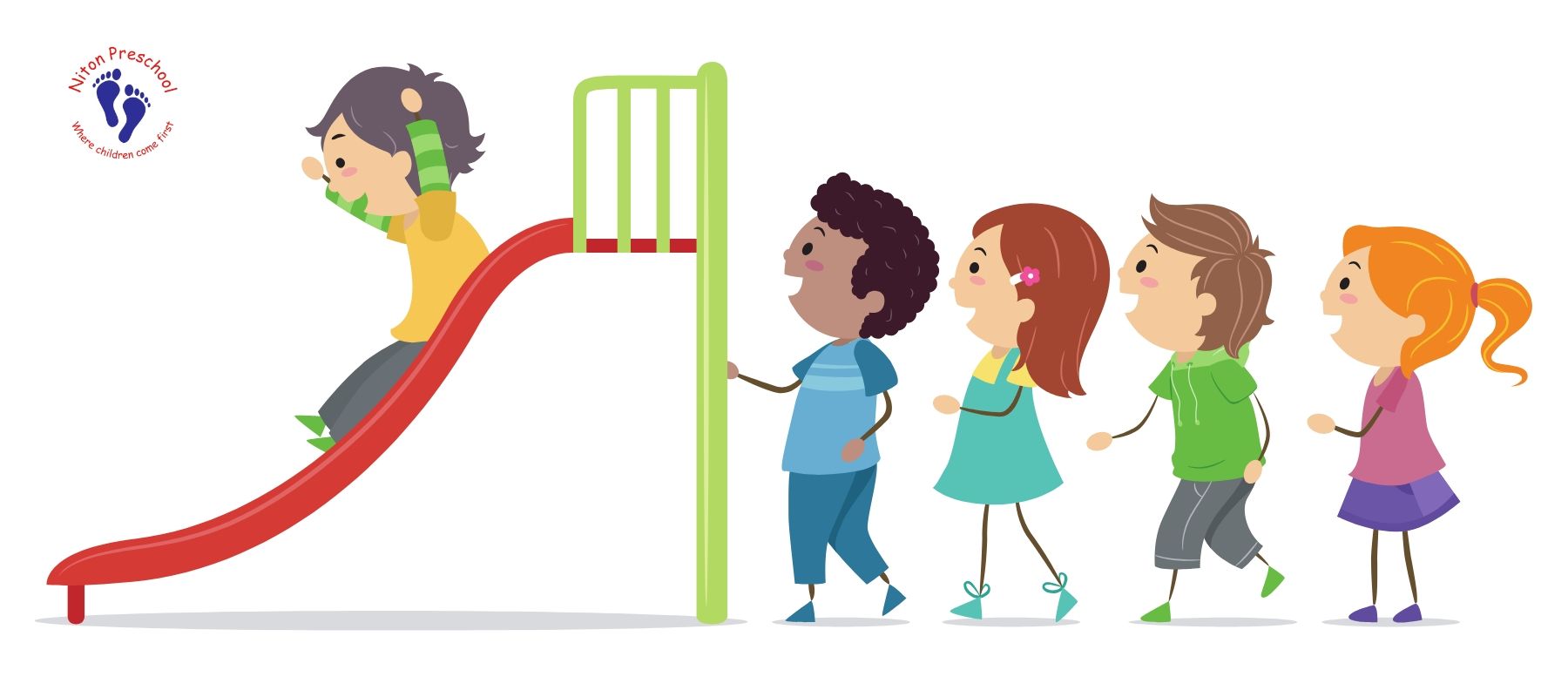Taking Turns, One Giggle at a Time
Good simple, easy ways to encourage turn taking…
TL;DR:
- Babies can start learning turn-taking through games like peek-a-boo and rhymes.
- Toddlers benefit from simple sharing games like passing toys or building together.
- Preschoolers can handle structured activities like board games and role-play.
- Always model the behaviour and use phrases like “my turn” and “your turn.”
- Keep it short, praise patience, and use visuals to support understanding.

Good simple, easy ways to encourage turn taking…
When working with children aged 0-4 years, promoting turn-taking is a vital skill that helps them learn social interaction, patience, and communication. Here are some age-appropriate ideas to encourage turn-taking:
For Infants (0-12 months)
At this stage, babies are not ready for complex turn-taking but can engage in simple back-and-forth interactions.
- Peek-a-Boo: This simple game encourages interaction. Take turns hiding your face, then revealing it with a smile. It helps babies understand the concept of anticipation and social exchange.
- Imitation Games: Make simple sounds or gestures, and encourage the baby to "respond" in a similar way, even if it’s just a babble or coo. This starts to build the rhythm of back-and-forth exchanges.
- Parent-Child Rhymes: Songs like "Pat-a-cake" or "Itsy Bitsy Spider" involve taking turns clapping hands or making gestures, even if the baby is mostly observing at first.
For Toddlers (1-2 years)
At this stage, children are learning to take turns in a more interactive way, even if they still have limited patience.
- Pass the Toy: Sit in a circle or face-to-face and pass a soft toy back and forth. Model the action by saying, "It's your turn!" and “My turn!” to encourage understanding.
- Taking Turns with Simple Tasks: If you're playing with a toy that requires action (like a car or a ball), let the child take one turn, then you take one, reinforcing the idea of sharing space and time.
- Turn-Taking Games: Start with very simple board games or activities where the toddler has to wait their turn (like rolling a dice or moving pieces on a board). Games like “Roll and Play” are great for this age.
- Building Blocks: Build a tower together with blocks and take turns adding a piece. You can say, “Now it’s my turn, now it’s your turn,” to model the exchange.
- Interactive Storytime: While reading a book, you can take turns acting out parts of the story or pointing to pictures, allowing the child to have input during the reading process.

For Preschoolers (3-4 years)
By this age, children are beginning to better understand the concept of taking turns in social settings.
- Simple Board Games: Games like "Snakes and Ladders" are designed for taking turns, and they’re perfect for this age group. Make sure to model patience and explain waiting for others’ turns.
- Role-Playing: Engage in pretend play where the child has a chance to "take turns" in different roles (like playing house, school, doctor, etc.). Take turns assigning roles and actions.
- Building Together: Work together to create something with large blocks or a construction set. Take turns putting pieces together and narrate what you’re doing ("Now it's your turn to add the piece").
- Art Time: If you're doing an art project (like colouring or using stickers), take turns choosing colours or stickers to use.
- Simple Card Games: Games like "Snap" or "Pairs" are great for practicing turn-taking and memory, with a fun competitive element that doesn’t make it frustrating.
- Ball Throw or Catch: Play a simple game where you throw a ball back and forth. After the child throws or catches, say, “Your turn!” and reinforce waiting for their turn.
- Sand or Water Play: In a shared sandbox or water table, model turn-taking when playing with toys. For example, “It’s my turn to fill the bucket, now it’s your turn!”
- Sing-along Songs: Sing songs like "The Wheels on the Bus" or "If You’re Happy and You Know It", where the child can take turns with you on actions or singing specific lines.
General Tips for Encouraging Turn-Taking in Young Children
- Model Behaviour: Demonstrate turn-taking yourself, and the child will naturally begin to mimic it.
- Praise Patience: Acknowledge when the child waits for their turn, even if it’s just for a few seconds. Positive reinforcement helps encourage this behaviour.
- Keep It Short: Children under 4 have short attention spans, so make turn-taking exchanges brief, but frequent, to hold their interest.
- Use Timers or Visual Cues: For older toddlers or preschoolers, you can use a timer or visual object (like a "turn-taking chart") to help them understand the flow of turns.
Share this news article










